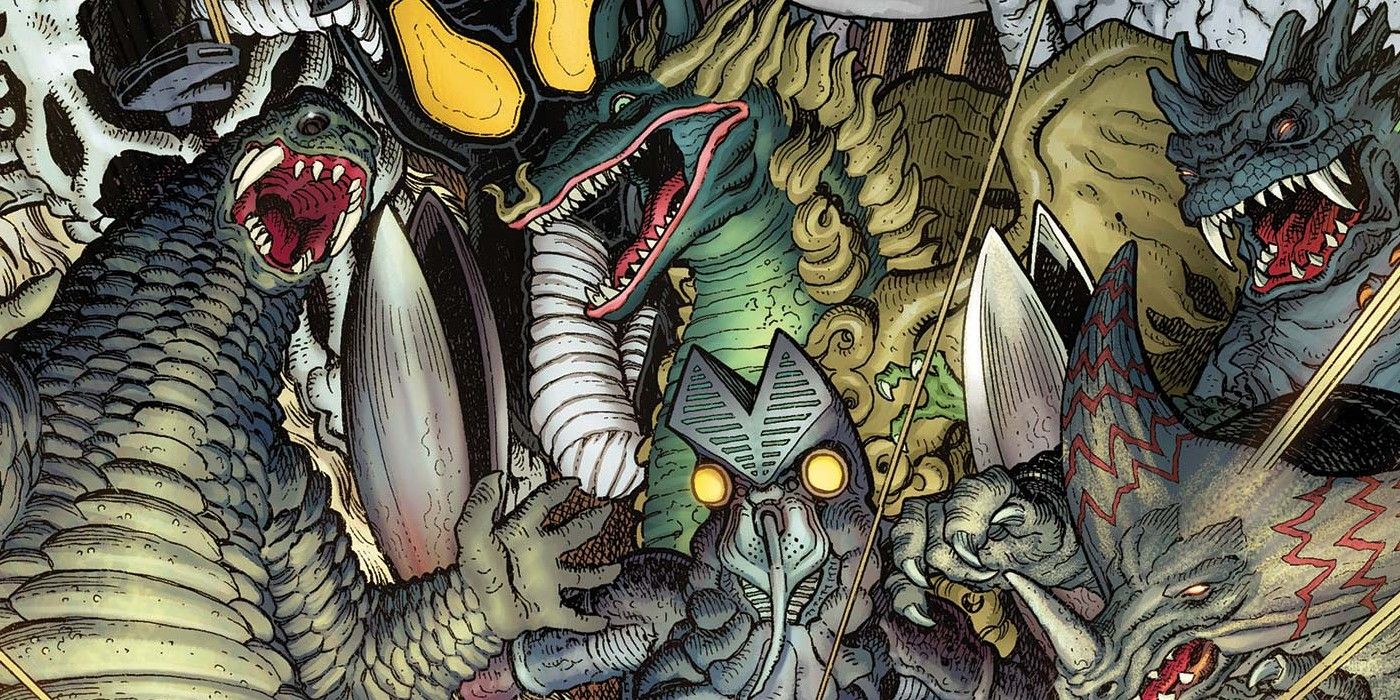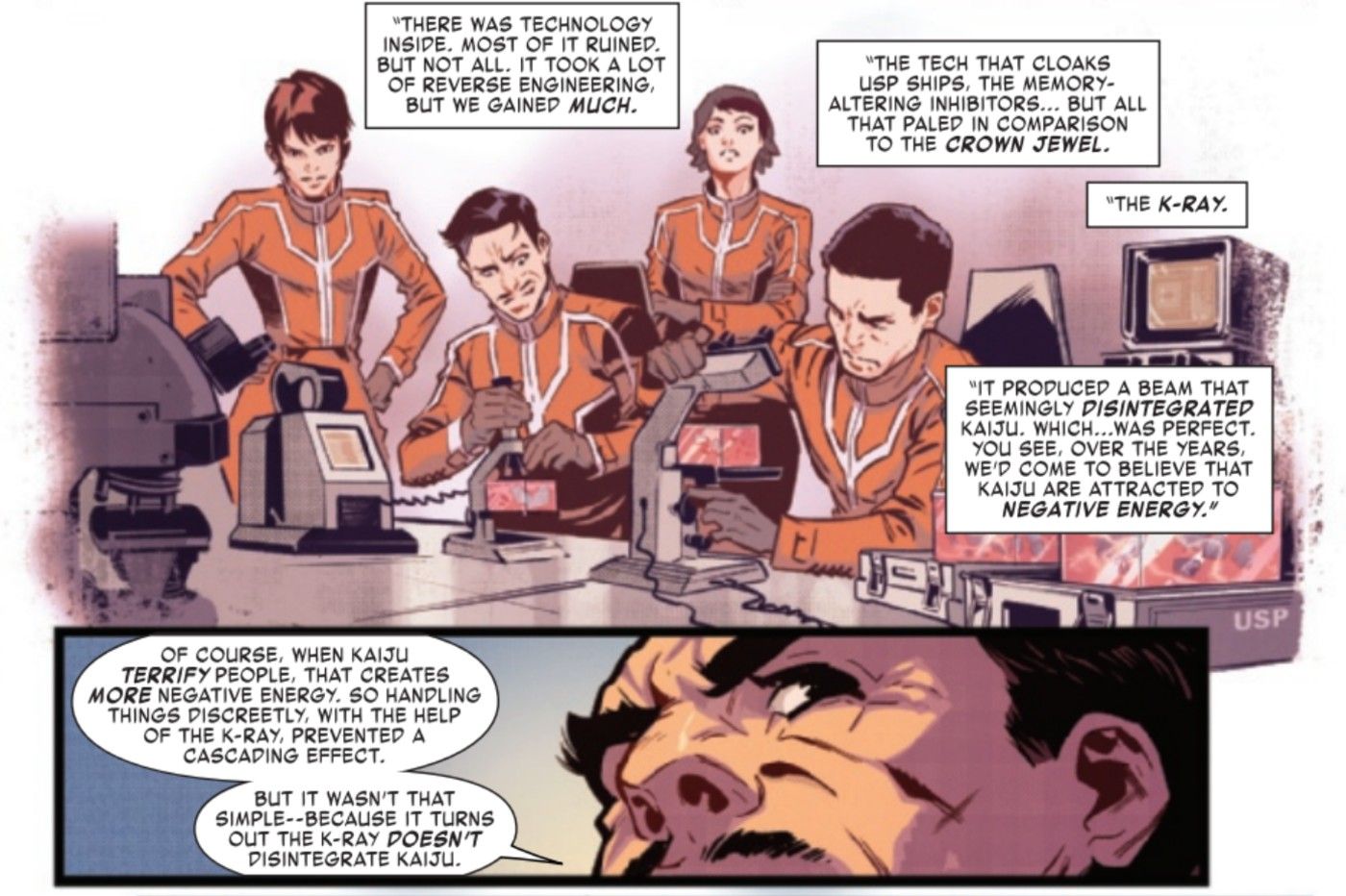Warning: spoilers for The Rise of Ultraman #4!
The word kaijū translates to “strange beast.” From the classic Godzilla, to the lesser known Gamera, these giant monsters have captured genre lovers' imaginations since the 1950s. Much about them remains undefined to this day, however. After countless sequels, prequels, reimaginings, and reboots, the mechanics and origins of these “strange beasts” remains unbound to any particular series or monster. The classic Toho films are revered but not viewed as gospel. They serve as an open-source guide to the genre rather than a list of rules and definitions. This is likely why a common aspect of any kaijū story is examining the nature of the beast itself. Where does it come from? What does it want? What is its biological/chemical makeup?
Marvel Comics took a stab at defining an aspect of the inner-workings of kaijū in their latest issue of Ultraman: Rise of Ultraman #4. An extension of the kaijū genre, Ultraman first debuted in the late ’60s. It introduced superheroes into the mix, who battled back these larger than life monsters from cities and population centers. Marvel, through writer-team Kyle Higgins & Mat Groom and artist Francesco Manna, looked to reinvent Ultraman’s origin for a modern audience with this year’s Rise of Ultraman. From the jump, the book made clear its intentions: capture what made Ultraman cool in the 1960s, but also introduce interesting new nuances to the property previous iterations maybe never thought of, including an overriding explanation for what Ultraman's kaiju are all about.
The world-building was such a priority for Higgins and Groom, Ultraman himself barely appears at all in the first issue. Instead, the team focused on introducing their version of the United Science Patrol (think this series’ version of the MonsterVerse’s “Monarch” organization), and the alien entity from which Ultraman derives his power. Issue #4 revisits earlier teases as Shin - Ultraman’s human form - questions the director of the United Science Patrol on the nature of the monsters at large. The director explains that over the decades USP’s research division determined that these kaijū are attracted to and thrive off negative energy. This creates a self-serving cycle. The beasts seek out epicenters of negative energy, and their existence terrifies the populace creating more negative energy. They grow stronger and wreak more havoc, which creates more fear and negative energy, ad infinitum.
Negative Energy, or Minus Energy, isn't a new addition to Ultraman lore, but other iterations have tended to focus on its ability to create or empower kaiju. Focusing so early on the idea that it attracts and sustains the monster gives an instant justification for why the giant creatures would seek out and actively terrify human settlements, adding in the kind of outside risk factor that can work so well in comic-book stories - it's not just about beating the monsters, but about the circumstances in which they're approached and attacked, since excessive publicity would only increase the threat.
The very idea of kaijū spawned from Post-War Japan, where the unfathomable threat of the atomic age became horrifically real. Godzilla served as merely a metaphor for atomic annihilation. Rise of Ultraman’s explanation, though, feels cogent and timely for a 21st-Century audience. The theory is especially weighty in the year 2020, as those embedded in urban life experience the most dramatic changes in lifestyle due to COVID restrictions. The cyclical nature of the concept alone makes sense, in any context or setting within the kaijū genre. The idea could even tackle the long-standing trope of kaijū growing physically larger as they continue to terrorize. Ultraman: Rise of Ultraman #4’s focus on negative energy is an interesting and logical theory given the history and established lore of kaijū as viewed through the lens of 2020, setting the series up to tell fascinating stories from a human perspective as Ultraman continues his Marvel Comics adventures.


